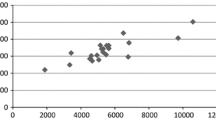Abstract
In northwest Mexico, along the Sierra Madre Occidental and the adjacent slopes and plains, maize forms the center of a series of cultural traits illustrative of the interrelationships of man and plants. Here more than 20 racial types have been collected. This diversity is related to the variation in climate and soil conditions, to human migrations from the Mesoamerican cultural center to the Greater Southwest area, and to the differential selection by the ethnic groups in the region. The agricultural practices of the farmers are reviewed to illustrate how different aspects of environment, economic needs, food preference, manner of utilization, and ceremonial concepts constitute continuing forces of selection and motivation for introduction of varieties from other areas. It is suggested that color of the grain is utilized as an indicator of physiological characteristics. A phenotypic analysis of more than 600 collections from the area indicates the occurrence of constant intercrossing among maize populations.
Similar content being viewed by others
Literature Cited
Anderson, E. 1944. Maiz Reventador. Ann. Missouri Bot. Garden 31: 301–314.
— 1946. Maize in Mexico—A preliminary survey. Ann. Missouri Bot. Garden 33: 147–247.
—, and H. Cutler. 1942. Races of Zea mays: Their recognition and classification. Ann. Missouri Bot. Garden 29: 69–89.
Beals, L. 1946. Cherán: A Sierra Tarascan Village. Inst. Soc. Anthropol. Publ. no. 2. Smithsonian Inst., Washington, DC.
Bennett, W. C., and R. M. Zingg. 1935. The Tarahumara, an Indian Tribe of Northern Mexico. Chicago Univ. Press, Chicago, IL.
Benz, B. F. 1981. Five Modern Races of Maize from Northwestern Mexico: Archaeological Implications. Master’s Thesis, Dept. Anthropol., Univ. Colorado, Boulder, CO.
Bucio Alanis, L. 1954. Algunas observaciones del comportamiento de la F1 de las cruzas entre las razas de maíz descritas en México. Tesis profesional, Escuela Nacional Agriculture, Chapingo, México.
Carter, G. F., and E. Anderson. 1945. A preliminary survey of maize in the Southwestern United States. Ann. Missouri Bot. Garden 32: 297–323.
Echeverria, Ma. E., and E. Arroyo, coord. 1982. Recetario mexicano del maíz. Museo Nacional de Culturas Populares, Secretaria Educatión Pública, México, D.F.
Foster, G. 1946. Empire’s Children: the People of Tzintzuntzan. Inst. Soc. Anthropol. Publ. no. 6. Smithsonian Inst., Washington, DC.
Goodman, M. M., and R. McK. Bird. 1977. The races of maize. IV: Tentative grouping of 219 Latin American races. Econ. Bot. 31: 204–221.
—, and E. Paterniani. 1969. The races of maize: III. Choices of appropriate characters for racial classification. Econ. Bot. 23: 265–273.
Hernández X., E. 1970. Exploratión etnobotánica y su metodología. Rama Botánica, Colegio Postgraduados, ENA, Chapingo, México.
—, and G. Alanís Flores. 1970. Estudio morfológico de cinco nuevas razas de maíz de la Sierra Madre Occidental de México. Implicaciones filogenéticas y fitogeográficas. Agrociencia 5: 3–30.
— 1973. Genetic resources of primitive varieties of Mesoamerica:Zea spp.,Phaseolus spp.,Capsicum spp., andCucurbita spp.In Frankel, O. H., ed, Survey of Crop Genetic Resources in Their Center of Diversity (first report), p. 76–115. FAO, Int. Board for Plant Genetic Resources, Rome.
Kelly, I., and E. Anderson. 1943. Sweet corn in Jalisco. Ann. Missouri Bot. Garden 30: 403–412.
López Herrera, A. 1975. Fechas de siembras en Valles Altos para comprobar la relatión de la coloratión del grano de maíz con la precocidad y la productión. Tesis profesional, Escuela Nacional Agriculture, Chapingo, México.
National Geographic Society. 1972. Indians of North America. Map supplement. Natl. Geogr. Mag. 142: 739 A.
Ortega Paczka, R. 1973. Variatión en maíz y cambios socioeconómicos en Chiapas, Méx. 1946–1971. M.C. tesis, Colegio Postgraduados, Chapingo, México.
Pennington, C. W. 1969. The Tepehuan of Chihuahua. Their Material Culture. Univ. Utah Press, Salt Lake City, UT.
Schuster, R. A., and R. A. Bye, Jr. 1983. Patterns of variation in exotic races of maize (Zea mays, Gramineae) in a new geographic area. J. Ethnobiol. 3: 157–174.
Weatherwax, P. 1942. The Indian as a corn breeder. Proc. Indiana Acad. Sci. 51: 13–21.
Wellhausen, E. J., L. M. Roberts, and E. Hernández X. in collaboration with P. C. Mangelsdorf. 1952. Races of Maize in Mexico, Their Origins, Characteristics and Distribution. Bussey Inst, Harvard Univ., Cambridge, MA.
West, R. C. 1946. Cultural Geography of the Modern Tarascan Area. Inst. Soc. Anthropol. Publ. no. 7. Smithsonian Inst., Washington, DC.
Yakoleff G., V., E. Hernández X., C. Rodjind de Cuadra, and C. Larralde. 1982. Electrophoretic and immunological characterization of pollen protein ofZea mays races. Econ. Bot. 36: 113–123.
Author information
Authors and Affiliations
Rights and permissions
About this article
Cite this article
Xolocotzi, E.H. Maize and man in the Greater Southwest. Econ Bot 39, 416–430 (1985). https://doi.org/10.1007/BF02858749
Received:
Accepted:
Issue Date:
DOI: https://doi.org/10.1007/BF02858749




